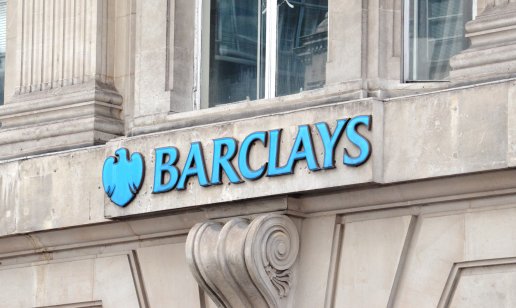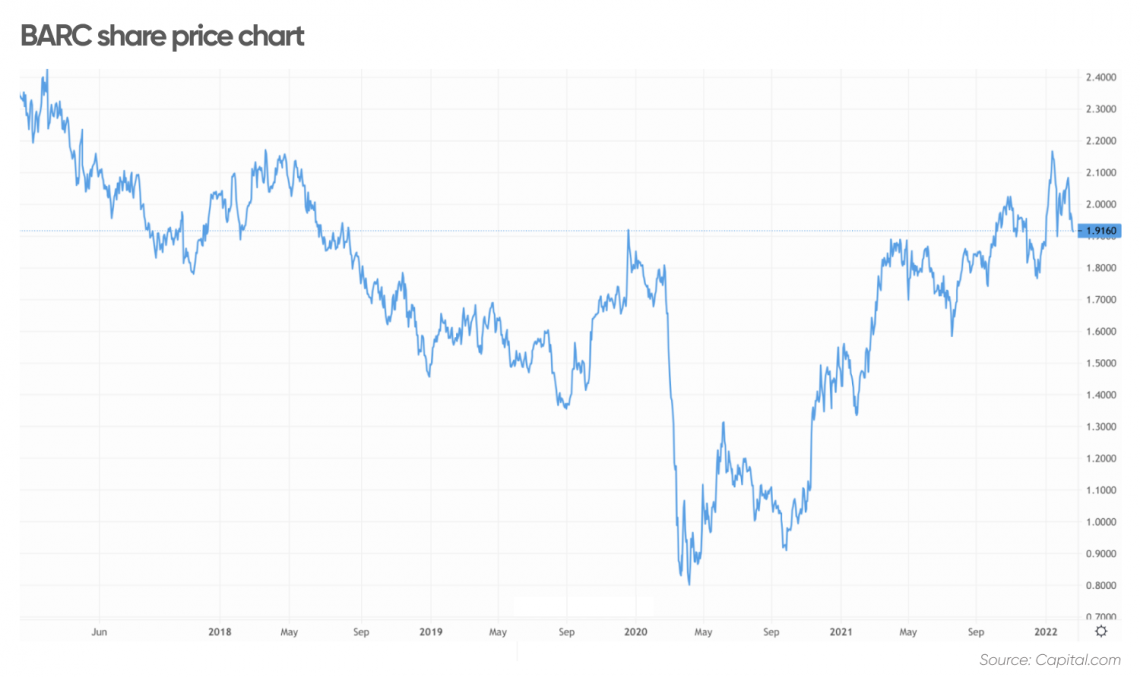Barclays share price forecast: Сan the bank stock break out?

Shares in UK bank Barclays (BARC) climbed by more than 27% in 2021 on the global economic recovery from the Covid-19 pandemic but have retreated by 2% year-to-date as stockmarkets have come under pressure.
The bank stock has been caught between the negative impact of rising interest rates on stock prices and the bullish effect of higher interest rates on revenues for financial products such as credit cards and loans.
So, are Barclays shares a buy, sell, or hold at this point?
In this article, we look at the latest Barclays share price news and some of the forecasts for the direction of the share price.
Barclays management changes
Barclays has recently undergone a reshuffling of its top management team. CS Venkatakrishnan (known as Venkat) was appointed as group chief executive in November 2021 after James ‘Jes’ Staley stepped down following an investigation by the UK’s Financial Conduct Authority (FCA) and Prudential Regulation Authority (PRA).
Prior to the appointment he was head of global markets, co-president of Barclays Bank and a member of the group executive committee of Barclays, based in New York. He has also served as chief risk officer at Barclays.
The bank is focused on its investment banking division and driving growth in its consumer banking business. While inflation pressures have weighed on the share price, expectations of rising interest rates in the US and UK in 2022 and beyond could provide support, as the bank will be able to raise its revenue from loans and credit cards.
The Bank of England (BoE) raised the UK bank rate from 0.25% to 0.5% on 3 February as the central bank attempted to tackle inflation, and said that interest rates are likely to rise further over the coming months. In the US, the Federal Reserve (Fed) is expected to begin raising interest rates in March.
In its third-quarter earnings results, Barclays reported strong corporate and investment bank (CIB) performance, as investment banking fees and equities income had its best third-quarter, year-to-date results on a comparable basis, driving a return on tangible equity (RoTE) of 16.4%, up from 10.5% in the same period of 2020.
Barclays reinstated its dividend in the second quarter of last year in response to improved results, paying an interim dividend of 2p a share, compared with 3p in 2019. The bank expects to continue to pay a progressive ordinary dividend and supplement it with additional returns such as share buybacks “as appropriate”.
Recent announcements show that Barclays continues to expand its business internationally.
On 20 December, Barclays announced that it received approval from the Australian Prudential Regulation Authority (APRA) to operate as a foreign authorised deposit-taking institution (ADI) in Australia. The company expects its Australia branch in Sydney to go live in April 2022.
Barclays re-established operations in Australia in 2018 to provide global financing products and services to corporate and investment bank clients.
“Australia presents tremendous growth opportunities and is an important financial services market in the region,” said Jaideep Khanna, head of Barclays, Asia Pacific.
Barclays is expanding in the fintech space, announcing a partnership on 3 February with corporate venture builder Rainmaking. Barclays plans to launch several initiatives targeting fintech founders around the world from early-stage businesses upwards to help them develop their companies.
Barclays share price retreats from four-year high
The Barclays share price plunged from £1.83 per share in February 2020 to £0.80 per share at the end of March 2020 as Covid-19 lockdowns hit consumer spending. The stock price has since been in an upward trend in anticipation of a return to pre-pandemic growth in global economic activity. The share price climbed from £1.47 per share at the end of 2020 to £1.87 per share at the end of 2021.

The share price climbed to £2.17 per share on 13 January, its highest level since March 2017. But then dropped to £1.90 per share on 24 January when stock prices fell over suggestions the US Federal Reserve could raise interest rates faster than expected to tackle inflation. Higher interest rates tend to result in investors favouring Treasury bonds and interest-bearing accounts over higher-risk stocks.
As well as trading on the London Stock Exchange (LSE) under the ticker BARC, Barclays is also listed on the New York Stock Exchange (NYSE) as BCS. The BCS stock price has been virtually unchanged year to date, closing at $10.54 per share on 17 February after gaining 29.5% in 2021.
What is the outlook for the Barclays share value for the remainder of this year and beyond?
Barclays share price forecast: Is the stock a buy or sell?
At the time of writing, the average 12-month Barclays share price target from nine analysts who have issued a rating on the stock was £2.61 per share, ranging between £2.10 at the low end and £3.30 at the high, according to MarketBeat. That would indicate upside from the current share price. Seven of the analysts rate the stock a buy while the other two recommend holding the stock.
On 10 February, Goldman Sachs raised its Barclays share price prediction from £3 per share to £3.30 per share, with a buy rating on the stock. The previous day, Credit Suisse issued a Barclays stock forecast of £2.30 per share. Earlier in February, Jefferies Financial set a price target of £3.21 per share and Berenberg reiterated its buy rating with a price target of £2.45 per share.
Barclays stock analysis from Simply Wall Street, at the time of writing, showed that the share price was 28.1% below its fair value estimate. But the data showed that the bank’s earnings are set to decline by an average of 8.6% annually over the next three years.
Online stock forecasting site WalletInvestor was bearish in its long-term Barclays share price outlook. The site’s algorithm predicted that the stock could decline in value to £1.85 per share by the end of 2022 and £1.77 per share by the end of 2023. The stock could fall to £1.61 by the end of 2025, the data showed.
But The Economy Forecast Agency was bullish in its long-term prediction. The site expected BARC to trade up to £2.15 by the end of 2022 and £2.19 in March 2023, before slipping back to £1.79 in June 2023. The stock could then trade back up to £2.18 in November 2023, although it could retreat to £2.00 by February 2024.
When looking at price forecasts you should bear in mind that analysts and algorithm-based forecasters can and do get their predictions wrong.
We recommend that you always do your own research before making any investment decisions and remember that past performance is no guarantee of future returns. You should never invest money that you cannot afford to lose.
FAQs
Is Barclays a good investment?
Whether Barclays stock is a good buy for your investment portfolio will depend on your personal financial situation and risk tolerance, among other factors. You should research the stock to decide whether it is a suitable fit for your investing goals. Remember that past performance is not an indicator of future returns, and you should never invest money that you cannot afford to lose.
Will Barclays stock go up or down?
At the time of writing, some Wall Street analysts expected the BARC share price to rise in the coming year, according to MarketBeat. But over the long term, forecast site WalletInvestor predicted that the stock could shed value.
Bear in mind that forecasters can and do get their predictions wrong. You should always do your own research to develop your own view of the share price and its potential future direction. Remember that past performance is no guarantee of future returns.
Markets in this article
Related topics
